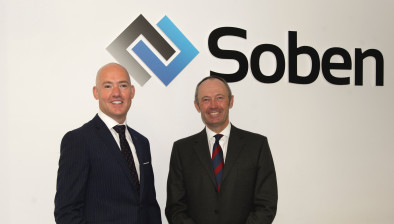Blog: The age-old question: salary or dividends?

Roger Campbell outlines what construction directors should consider when deciding whether to take profits as a salary or dividend.
As a matter of course, many directors of construction companies will seek advice on optimising their tax efficient remuneration. The most popular question being ‘should I extract profits as a salary or dividend?’
This has become even more prominent following the introduction of the ‘dividend allowance’ from 2016. Of course, the answer changes depending on the current regime, and particularly as the taxation of dividends now seems to be fair game when Budget day comes around.
Drawing dividends
The ‘dividend allowance’ was introduced in 2016, and was set at a level of £5,000. In March 2017, the government announced that this allowance will reduce to £2,000 with effect from 6 April 2018 (from 2018/19 onwards). This news came before we’d even started to see the effect of the initial change. The purpose of the allowance is to ensure that dividends up to the limit are taxed at 0% instead of the taxpayer’s marginal dividend rate (which can be up to 38.1%).
Prior to the dividend allowance being introduced on 6 April 2016, any dividends drawn which were within the ‘basic rate band’ would be free from income tax due to the ‘notional tax credit’.
Consider a combination
Taking into account the reduced dividend allowance, and assuming the individual has no other income, the most tax efficient remuneration strategy is to draw a salary up to the National Insurance Contributions (NIC) Primary Threshold (PT), (which is currently £8,164) and draw the remainder of distributable (after deducting corporation tax) profits as a dividend. This was also the case prior to the introduction of the reduced dividend allowance.
However, if the National Insurance ‘Employment Allowance’ is available, meaning no NIC is payable on the salary drawn by the director or shareholder, then the salary could be increased to the personal allowance (which is currently £11,500).
It’s not always an easy answer
Generally, there will be corporate tax and income tax liabilities arising with the above remuneration strategy. For the company, dividends are paid out of their ‘after corporation tax’ profits. For the individual, any dividend income that is in excess of any available personal and dividend allowances would be subject to income tax at the appropriate rate.
Due to the progressive nature of the income tax regime and how it interacts with dividends, whilst it is always more tax efficient to use a dividend strategy to extract profits, the tax saving is maximised where total earnings are in the region of £43,000 for Scottish taxpayers and £45,000 for UK taxpayers (excluding Scotland).
Of course, there are some disadvantages to taking the majority of income via the dividend route. To start with, a salary can be taken whatever the financial state of the business, whereas a dividend can only be taken from distributable reserves – so it’s less dependable within some business models. Further to this, if you are on a ‘salary’ of £8,164 - £11,500, sorting out secured lending can be challenging, as many rigid high street lenders don’t recognise income from dividends.
That said, despite the recent pinch, using the salary/dividend combination is still more tax efficient – both for the director as an individual, and for the company itself – and the most effective route for those directors wanting to make the most of their money.
















